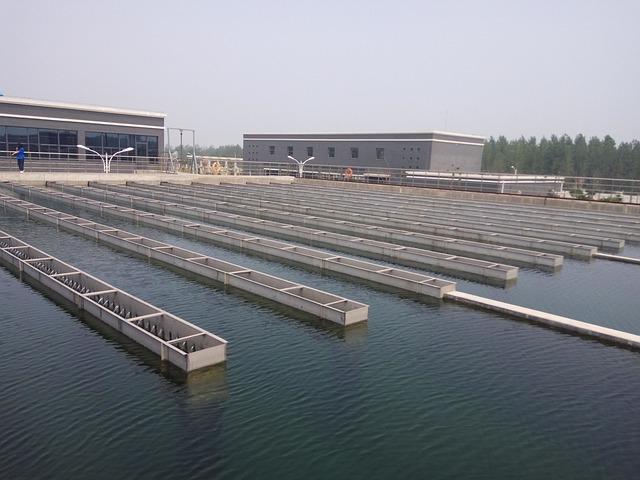Industrial waste water poses significant challenges for the environment and public health. With the rise of industrial activities globally, the need for effective water treatment chemicals has become more crucial than ever. These chemicals play a pivotal role in ensuring that industrial effluents are treated properly before being discharged into the environment. This blog delves into the best chemicals for water treatment, their applications, and their rising demand in various industries.
Understanding the Importance of Industrial Water Treatment

Industrial water treatment is the process of purifying waste water generated by industries to ensure it meets environmental safety standards. Untreated industrial waste water can contain harmful substances like heavy metals, toxic chemicals, and pathogens, which can contaminate water bodies, harm aquatic life, and pose severe health risks to humans. Chemicals used in water treatment can help to neutralize these pollutants.
The demand for industrial water treatment has surged due to stricter environmental regulations and the growing awareness of sustainable practices. Industries such as manufacturing, mining, pharmaceuticals, and petrochemicals are increasingly adopting water treatment solutions to comply with legal requirements and demonstrate corporate responsibility.
The Best Chemicals for Water Treatment
Various chemicals are used in water treatment processes, each serving a specific purpose. Here are some of the most effective and commonly used chemicals for water treatment in industrial settings:
-
Coagulants and Flocculants
- Alum (Aluminium Sulfate): A widely used coagulant, alum helps in the aggregation of suspended particles in water, making it easier to remove them through sedimentation. Its effectiveness in clarifying water makes it a staple in industrial water treatment processes.
- Polyacrylamide (PAM): This synthetic flocculant is used to enhance the coagulation process by forming large flocs, which settle faster and can be removed more efficiently. PAM is particularly effective in treating waste water with high levels of suspended solids.
-
Biocides
- Chlorine and Chlorine Dioxide: These are powerful oxidizing agents used to kill bacteria, viruses, and other pathogens in industrial waste water. Chlorine, in particular, is one of the most commonly used biocides due to its availability and cost-effectiveness.
- Glutaraldehyde: This non-oxidizing biocide is effective against a broad spectrum of microorganisms, including bacteria and fungi. It is widely used in industries such as oil and gas, where biofilm formation can lead to operational issues.
-
pH Adjusters
- Sulfuric Acid and Hydrochloric Acid: These acids are commonly used to lower the pH of alkaline waste water, making it easier to neutralize and treat. Proper pH adjustment is critical in ensuring the effectiveness of other water treatment solutions.
- Caustic Soda (Sodium Hydroxide): On the other hand, caustic soda is used to raise the pH of acidic waste water, facilitating the precipitation of metals and other contaminants.
Also Read: 10 Caustic Soda Uses in Industries
-
Corrosion Inhibitors
- Phosphates: These chemicals are used to prevent corrosion in industrial water systems by forming a protective layer on metal surfaces. This is particularly important in industries where metal equipment is exposed to treated water, such as power plants and refineries.
- Zinc Orthophosphate: This is a highly effective corrosion inhibitor used to protect pipelines and other metal infrastructure from rust and degradation, especially in systems where water is recirculated.
-
Scale Inhibitors
- Polyphosphates: These chemicals prevent the formation of scale, which can clog pipes and reduce the efficiency of heat exchangers in industrial processes. Polyphosphates are especially effective in hard water conditions where calcium and magnesium ions are present.
- Phosphonates: These are another class of scale inhibitors that work by binding to scale-forming ions and preventing them from crystallizing on surfaces. Phosphonates are widely used in cooling towers and boilers.
-
Oxidants
- Hydrogen Peroxide: This powerful oxidant is used to remove organic pollutants, including phenols, from industrial waste water. It also aids in the breakdown of complex molecules, making them easier to treat.
- Ozone: As an advanced oxidant, ozone is highly effective in breaking down organic matter, killing microorganisms, and reducing chemical oxygen demand (COD) in waste water. Its use is growing in industries that require high levels of water purity.
The Demand for Water Treatment Chemicals

The demand for chemicals used in water treatment is on the rise, driven by several factors:
-
Stringent Environmental Regulations
Governments worldwide are enforcing stricter regulations on industrial waste water disposal to protect the environment and public health. Industries are required to meet specific water quality standards before discharging effluents, which has led to increased use of treatment chemicals. The global industrial water treatment market is expected to grow significantly in the coming years, with treatment chemicals playing a central role.
-
Sustainable Practices
With growing awareness of the environmental impact of industrial activities, companies are adopting sustainable practices, including efficient water treatment. This shift is driving the demand for more effective and environmentally friendly water treatment solutions. Green chemistry innovations, such as biodegradable flocculants and non-toxic biocides, are gaining traction as industries seek to minimize their ecological footprint.
-
Rapid Industrialization
The rapid industrialization in emerging economies, particularly in Asia-Pacific, has led to increased demand for water treatment. Countries like China and India are witnessing a surge in industrial activities, leading to higher volumes of waste water that need to be treated. As a result, the water treatment chemicals market in these regions is expected to grow at a substantial rate.
-
Technological Advancements
Advancements in water treatment technology are also driving the demand for specialized chemicals. For example, the development of membrane filtration systems requires specific chemicals to prevent fouling and extend the lifespan of membranes. Similarly, the adoption of advanced oxidation processes (AOPs) in waste water treatment has increased the need for oxidants like ozone and hydrogen peroxide.
-
Global Water Scarcity
Water scarcity is a growing concern globally, and industries are under pressure to reduce their water consumption and recycle waste water. This has led to increased investment in water treatment solutions, including the use of chemicals that enhance the efficiency of recycling processes. The demand for water treatment solutions is expected to rise as industries seek to optimize their water usage and reduce their reliance on freshwater sources.
Challenges in the Water Treatment Chemicals Market
-
Cost Considerations
The cost of chemicals for water treatment can be a significant factor for industries, especially small and medium-sized enterprises (SMEs). The price volatility of raw materials used in chemical manufacturing can also impact the overall cost of treatment processes. Industries are constantly seeking cost-effective solutions without compromising on treatment efficiency.
-
Environmental Impact
While water treatment is essential for ensuring safe waste water disposal, some of the chemicals used in the process can have adverse environmental effects if not used properly. For instance, excessive use of chlorine can lead to the formation of harmful by-products like trihalomethanes (THMs). There is a growing need for environmentally friendly alternatives that offer the same level of effectiveness.
-
Disposal of Chemical Sludge
The disposal of sludge generated from water treatment processes is another challenge. Sludge often contains concentrated levels of contaminants, including heavy metals and toxic chemicals, making it difficult to dispose of safely. Industries must invest in sludge treatment and disposal methods to comply with environmental regulations.
-
Innovation and Development
Continuous innovation is required to develop new chemicals that are more effective, cost-efficient, and environmentally friendly. Research and development in this field are crucial to addressing the evolving needs of industries and meeting future challenges.
Sourcing Water Treatment Chemicals
The future of industrial water treatment lies in the development of more sustainable and efficient chemicals that can meet the growing demands of industries while minimizing their environmental impact. As the world moves towards a more sustainable future, the role of water treatment solutions will become even more critical in safeguarding our water resources and ensuring a cleaner, healthier environment for all.
Elchemy.com offers a reliable platform for sourcing high-quality water treatment solutions tailored to various industrial needs. Companies can benefit from Elchemy’s extensive network of suppliers, ensuring access to a wide range of chemicals like coagulants, biocides, and pH adjusters. With a focus on quality and sustainability, Elchemy.com provides customized solutions to meet specific treatment requirements.
Our user-friendly platform and dedicated customer support make the procurement process seamless, while competitive pricing ensures cost-effectiveness. By partnering with Elchemy, your company can optimize their water treatment processes and comply with environmental regulations efficiently. To avail our services, reach out to us today.





















